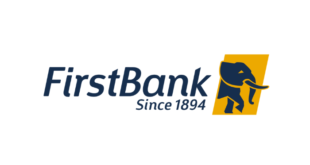By Roger Hampel

Botafogo House in Venice Beach, LA / Photo Credit: Botafogo
As the FIFA Club World Cup 2025 unfolds across the United States, a number of participating football clubs have adopted a parallel strategy: leveraging the tournament to establish a stronger foothold in the U.S. market through localized fan engagement hubs.
Several clubs—including Atlético de Madrid, Paris Saint-Germain, Flamengo, Palmeiras, Fluminense, Botafogo, Juventus, Borussia Dortmund, and Manchester City—have launched their own branded fan houses, pop-ups, or touring activations in major cities such as Los Angeles, New York, Orlando, Miami, Atlanta, and Toronto. Fan Houses FIFA Club World Cup 2025

Botafogo House in Venice Beach, LA / Photo Credit: Botafogo
Characteristics of Modern Fan Houses
Key components typically include:
-
Branded environments: club shops, themed installations, club memorabilia, and immersive décor
-
Daily programming: match screenings, meet-and-greet sessions with club legends, music, fitness, or football clinics
-
Cultural integration: partnerships with local artists, musicians, food vendors, and fan communities
-
Commercial activation: sponsor visibility, exclusive merchandising, limited-edition products, and fan CRM collection
These fan experiences create multi-sensory, high-frequency contact points between clubs and their global audiences, especially in strategically important markets such as the United States.

Casa Atleti in Los Angeles / Photo Credit: Atletico de Madrid
🇪🇸 Atlético de Madrid – Casa Atleti (Los Angeles)
🇫🇷 Paris Saint-Germain – PSG House (Melrose Avenue, LA)
A lifestyle-focused venue combining fashion, technology, wellness zones, podcast studios, and club activations in partnership with brands like EA Sports and Qatar Airways.
Located at ICON Park, this hub featured match screenings, samba music, local food, and ambassador appearances. Aimed at mobilizing Flamengo’s diaspora fan base in Florida.
Two-site engagement campaign featuring exhibitions, family zones, and live watch parties. Designed to reinforce Palmeiras’ presence in areas with strong Brazilian communities.
Concerts, beachside football activities, and watch parties created a relaxed, community-driven engagement model for one of Brazil’s most historic clubs.
A touring concept across five cities: Toronto, Boston, DC, Philadelphia, and Orlando. Included interactive installations, appearances by club legends, and fan community events.
A one-day event with Shaun Wright-Phillips and Joleon Lescott, designed as a hybrid fan festival combining games, family activities, and direct sponsor activations.

BVB Fan Embassy (Brooklyn, NY) / Photo Credit: BVB
Business Value: Why Fan Houses Matter
Key business drivers include:
-
U.S. Market Penetration: The United States is a primary growth market ahead of the FIFA World Cup 2026. Fan houses allow clubs to build authentic relationships and brand recognition within local communities and diasporas.
Sponsor Activation in Physical Environments: Clubs and their commercial partners benefit from face-to-face engagement. Sponsors gain visibility not only through signage, but through experiential integration—e.g. product tastings, photo zones, games, and co-branded merchandise.
-
Fan Lifecycle Monetization: These venues serve as acquisition and retention points. From first-time walk-ins to lifelong supporters, clubs convert casual interest into CRM data, merchandise sales, and digital memberships.
-
Localized Storytelling: Each fan house is an opportunity to localize the club’s global identity—connecting heritage with local culture, creating relevance, and building emotional affinity far from the home stadium.

PSG House (Melrose Avenue, LA) / Photo Credit: PSG
The FIFA Club World Cup 2025 has shown that international tournaments are not only sporting competitions, but also platforms for global brand expansion. The emergence of fan houses as structured, branded environments marks a new phase in football marketing.
Clubs that invest in such experiences position themselves more effectively for long-term success in global markets. As the sport continues to grow commercially, the value of physical fan engagement infrastructure will likely become a core component of international strategy—not a side initiative.
Culled from www.footballbusinessjournal.com
 Sports Business Brand Latest Brand News, Sports, Entertainment, Marketing, Sponsorships
Sports Business Brand Latest Brand News, Sports, Entertainment, Marketing, Sponsorships

